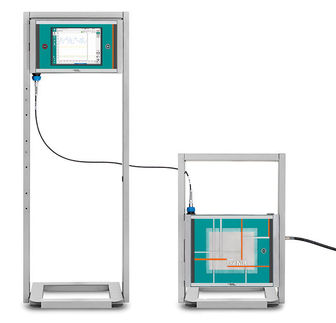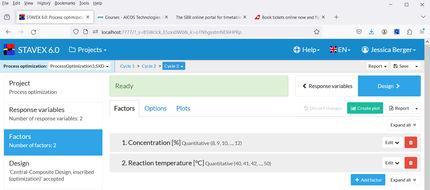Life Without Bread
Cover of 1st edition.
|
| Author
| Christian B. Allan, PhD.;
Wolfgang Lutz, M.D.
|
| Subject(s)
| Low-carbohydrate diet
|
| Genre(s)
| Nonfiction
|
| Publisher
| McGraw-Hill
|
| Publication date
| 2000-07-01
|
| ISBN
| 978-0658001703
|
| Preceded by
| W. Lutz, Leben ohne Brot (1967) Deutschland: Auflage. (16th Ed., ISBN 978-3887601003)
|
Life Without Bread, by Christian B. Allan, PhD, and Wolfgang Lutz M.D.,[1] is the English language edition of Lutz's Leben ohne Brot.[2] Allan collaborated with Lutz to translate, expand and revise Lutz's original text for publication in the United States in 2000. As of 2007, the German edition of Lutz's Leben ohne Brot is in its 16th edition and has been constantly in print since its first edition in 1967.[2]
Description of Life Without Bread
The authors have not included recipes, menus, or anecdotal accounts of patient's success stories. The book focuses on research proven results, written in layman's terms, and emphasizes the reasons the low-carbohydrate diet works for large numbers of people.
In this article, each chapter of the book will be described in précis form, with pertinent quotes.
Foreword
"The principal nutritional advice of Life Without Bread is to limit dietary carbohydrates. In this approach, dietary proteins and fats are correspondingly increased to achieve a balance of calories from fresh, whole foods." (p. vii.)
Acknowledgements
Allan acknowledges Lutz for "providing some of the most comprehensive long-term data on low-carbohydrate nutrition ever accumulated by one individual." Lutz accumulated his evidence from more than forty years of clinical practice. Lutz and Allan both acknowledge collaborators, editors, and fellow researchers. (pp. xi-xii)
Introduction
Allan asserts, "The low-fat theory ... has not stopped the incidence of degenerative diseases from skyrocketing over the last thirty or more years." Allan asserts further, "low-carbohydrate nutrition can actually reverse ― and in some cases cure ― many different diseases." (pp. xiii-xiv.)
Chapter 1
What Is Low-Carbohydrate Nutrition?
"Contrary to current popular wisdom, it is carbohydrates, not fat, that contribute to many dietary related diseases."(p. 1.) Proteins, fats, and carbohydrates are described in layman's terms. The basic dietary plan is summarized in the following lists.
THE BASICS
Permitted Foods
- Fish
- Any type of animal meat (beef, pork, chicken, lamb), sausage, cold cuts
- Eggs
- Cheese, sour cream, cream cheese, plain yogurt (without sugar), cream, milk (in moderate amounts)
- All kinds of animal fats
- Salads, leaves and stems of vegetables (asparagus, brussels sprouts, cauliflower, lettuce, cabbage, broccoli), cucumbers, avocados, tomatoes (in moderate amounts)
- Alcoholic beverages (only unsweetened, and in sensible amounts)
- Nuts (in moderate amounts)
Restricted Foods
- All carbohydrate-containing foods (breads, pastas, cereals, grains, potatoes, pastries, bagels)
- Sweet fruits
- Sweetened foods of all kinds (yogurt, drinks, desserts, candy)
- Dried fruits
—Life Without Bread, pp. 5-6.
Allan and Lutz define "Restricted Foods" as, "Restrict all carbohydrates to 72 utilizable grams per day. Eat as much of any other foods as you wish."(p. 5.)
A simplified table is included with restricted food types, illustrating how much of each food a person following the book's plan may eat daily.
Chapter 2
An Old Idea: The History of Low-Carbohydrate Nutrition.
The authors refute the common wisdom that low-fat, high-starch, diets are optimally healthy. They describe the contributions and usages of low carbohydrate diets by Herodotus, Jean Anthelme Brillat-Savarin, William Banting, Weston A. Price, Vilhjalmur Stefansson, and conclude with a summary of the state of low-carbohydrate nutrition today, referencing modern authors and titles.
Chapter 3
Carbohydrates and Hormones: Balance Your Way to Optimal Health.
The effects of carbohydrates on hormones are explained, with emphasis on how carbohydrates cause the liver to secrete insulin. Over abundance of insulin causes the body's hormone system to unbalance, and the body's cells to store fat.
Chapter 4
Diabetes and Insulin Resistance.
"The onset of diabetes and insulin resistance are actually the first physiological changes to take place before many other diseases begin to appear, such as cancer and heart disease." (p. 33.) Type 1 diabetes and type 2 diabetes are described, with accompanying graphs showing blood glucose levels comparing healthy and diseased patients. Studies which appear to contradict the authors' claims are analyzed in the light of scientific data. Lutz's results are asserted; low-carbohydrate diets "eliminate insulin resistance."(p. 53.)
Chapter 5
Less Is More.
"The body has very specific mechanisms for generating energy. Using carbohydrates is only one such mechanism, and not necessarily the best one." (p. 55.) The authors describe the energy cycles of the body's cells using layman's terms.
All energy pathways produce Adenosine triphosphate (ATP), a molecule which stores chemical energy for later use by the cells. The carbohydrate pathway is the least efficient of these. The pathways utilizing proteins and fats are more efficient. If the body requires more carbohydrates than are provided by the digestive tract, then it manufactures what is needed from available fats and proteins.
"Your heart needs fat from your diet to keep working. A low-fat high-carbohydrate diet may be the worst thing you can do for your heart." (p. 72.)
Chapter 6
Heart Disease: From Fat to Fiction.
Types of heart disease are defined and described. The history of how fat and cholesterol came to be considered harmful food substances is reviewed, from 1950 to present.
Major epidemiological studies are reviewed and compared and contrasted with Lutz's findings. These studies purport to demonstrate that fat is implicated in the cause of heart disease. More recent studies, in addition to Lutz's, indicate "fat is not a significant heart disease problem." (p. 108) "Dr. Lutz's experiences with thousands of patients are powerful evidence in support of low-carbohydrate nutrition to reduce heart disease ..." (p. 109)
Chapter 7
Gastrointestinal Disorders: Reduction, Relief, and Restoration.
Contrary to the prevailing theme, fat and meat do not cause common gastrointestinal disorders. Fat has been given a "bad rap" that is really due to excess carbohydrates taken in the same meal. There is a profound, good, influence on the gut when a low-carbohydrate diet is adapted.
Gastric disorders are defined and described, and their underlying cause is revealed as high-carbohydrate meals. These disorders are caused by insulin excess as a response to over abundant dietary carbohydrates.
Controlled scientific studies are reviewed on disorders such as: acid reflux, gastritis and peptic ulcers; constipation and diarrhea, diverticulosis, Crohn's disease, ulcerative colitis, and cancer. Lutz's clinical findings with his patients show elimination, reduction, or improvement with all these disorders.
Chapter 8
Weight Control.
Large population studies show that low-fat diets are not effective in controlling obesity in the USA and Europe. Observation and common sense by ordinary people show the same thing. The effective dietary plan for controlling obesity is the low-carbohydrate diet, as borne out by Lutz's clinical experience with thousands of patients.
People who are very thin are helped by a low-carbohydrate diet, showing improvement in muscle mass and bone density without increase of adipose tissue.
Chapter 9
Vitamins, Minerals, and Cofactors: The Myths Revealed.
Vitamins, minerals, micronutrients, and cofactors are defined. The body's requirement for them is discussed in detail, and their sources are listed and described. The low-carbohydrate diet, properly planned, can meet the body's requirements for these essential nutrients, and it can do so more efficiently than the alternatives, based on controlled scientific studies and Lutz's clinical experience.
Calcium in the blood supply increased and stabilized at optimal levels in a population study of low-carbohydrate diet users. Studies have shown a high-carbohydrate diet may leach calcium from the bones, a cause of osteoporosis.
Chapter 10
Cancer: Another Disease of Sugar Metabolism?
The authors describe the state of cancer research, and the leading theories of the causes of cancer, current to 2000. The biochemistry of cancer cells is described. The authors note that insulin stimulates growth factors in the cells, and they propose this as a mechanism for the cause of cancer. "Fat and protein are not the foods that cancer cells desire and need. We strongly believe that eating a low-carbohydrate diet reduces the risk of cancer because the most important food for cancer cells is glucose." (p. 177.)
Chapter 11
Evidence from Evolution: The True Fad Diet.
The human race has practiced agriculture, and introduced starches and sugar into its diet, only in the last few thousand years. Human evolution does not act fast enough to accommodate to this drastic change, according to the authors' research findings.
Human evolution and the known food sources available at each evolutionary stage are explained. The effects on diet and health of the change from a hunter-gatherer society to an agricultural society are described.
The authors examine and refute counter arguments to their theory: The human body is designed for a Paleolithic-style diet (or Stone Age diet), which is a low-carbohydrate diet based on proteins and fats; and the human body is not designed for a modern starch and sugar diet. The authors propose their diet program as a modern substitute for the Paleolithic diet which evolution shaped and optimized humanity's ancestors to survive upon.
Chapter 12
The Low-Carbohydrate Program in Practice: What You Need to Know.
The dietary needs of infants, children, and adults are discussed in detail. The reader is advised how to begin and maintain a low-carbohydrate diet program at all stages of life. Various conditions are described that the beginner may expect to improve with the program, including: loss of appetite; blood clots; bleeding gums; constipation; autoimmune reactions; chronic infections; asthma; ailments of the heart and liver; rheumatism; adverse reaction to vaccination.
The authors describe conditions under which the low-carbohydrate diet program does not work and how these conditions may improve.
The reader is advised how to begin the diet program with respect to food choice, food preparation, food types, home cooking, and restaurant meals.
Appendix
Carbohydrate Table.
The carbohydrate table in Chapter 1 is expanded and its use explained.
References and Index
Chapter footnotes are found here, followed by an index.
Book Description
(Quoted from back cover.)
Reviews
"A simple yet superb approach that clears up all the confusion about what and how to eat. A must read, as this book can save your life."
—Stephen T. Sinatra, M.D., F.A.C.C., C.B.T., author of Heartbreak & Heart Disease and The Coenzyme Ql0 Phenomenon
"A significant contribution to the field of health and disease."
—Kilmer S. McCully, M.D., author of The Homocysteine Revolution
Publisher's Description
THE TRUTH ABOUT LOW CARBOHYDRATE NUTRITION
If you're currently following a low-carbohydrate diet or thinking about changing the way you eat, Life Without Bread provides powerful evidence that can lead you to optimal lifelong health. Based on more than forty years of clinical research conducted on over 10,000 patients, this illuminating book unravels the mysteries of nutrition and shows how a low-carbohydrate diet high in healthy fats can reverse—and possibly cure—diabetes, heart disease, gastroin¬testinal disorders, and obesity, as well as boost strength and endurance. It isn't easy to alter years of dietary conditioning, but Dr. Allan and Dr. Lutz show you how to change your life and regain control over your health and nutrition.
Authors' Biographies
Christian B. Allan, Ph.D., has performed research on the chemistry of minerals, biochemistry, and nutrition at Lawrence Berkeley Laboratories, the University of Massachusetts in Amherst, and the National Institutes of Health. He currently works for a biotechnology company in Maryland.
Wolfgang Lutz, M.D., has studied low-carbohydrate nutrition on thousands of patients in his clinical practice. He has had great success in alleviating their ailments and building a comprehensive theory to explain why low-carbohydrate diets improve human health.
References
- ^ Allan, Christian B.; Lutz, Wolfgang [2000-07-01]. Life Without Bread, 1st Ed., McGraw-Hill, 240 pages. ISBN 978-0658001703.
- ^ a b Lutz, Wolfgang [1967] (August 2007). Leben ohne Brot, 16th (in Deutsch), Deutschland: Auflage. ISBN 978-3887601003.
See Also
External Links
- Lund University (2007, June 28). Original Human 'Stone Age' Diet Is Good For People With Diabetes, Study Finds. ScienceDaily. Retrieved on 2007-12-27.
- Tufts University, Health Sciences (2007, October 9). Limiting Refined Carbohydrates May Stall AMD Progression. ScienceDaily. Retrieved on 2007-12-27.
- Journal of the National Cancer Institute (2007, November 28). High Carb Diet Linked to Prostate Tumor Growth. ScienceDaily. Retrieved on 2007-12-27.
- Suny Downstate Medical Center (2007, December 4). Low-carb Diet Reduces Inflammation And Blood Saturated Fat In Metabolic Syndrome. ScienceDaily. Retrieved on 2007-12-27.
- Arizona State University (2007, December 17). Researchers Nix Low-carb Diet. ScienceDaily. Retrieved on 2007-12-27.
|







